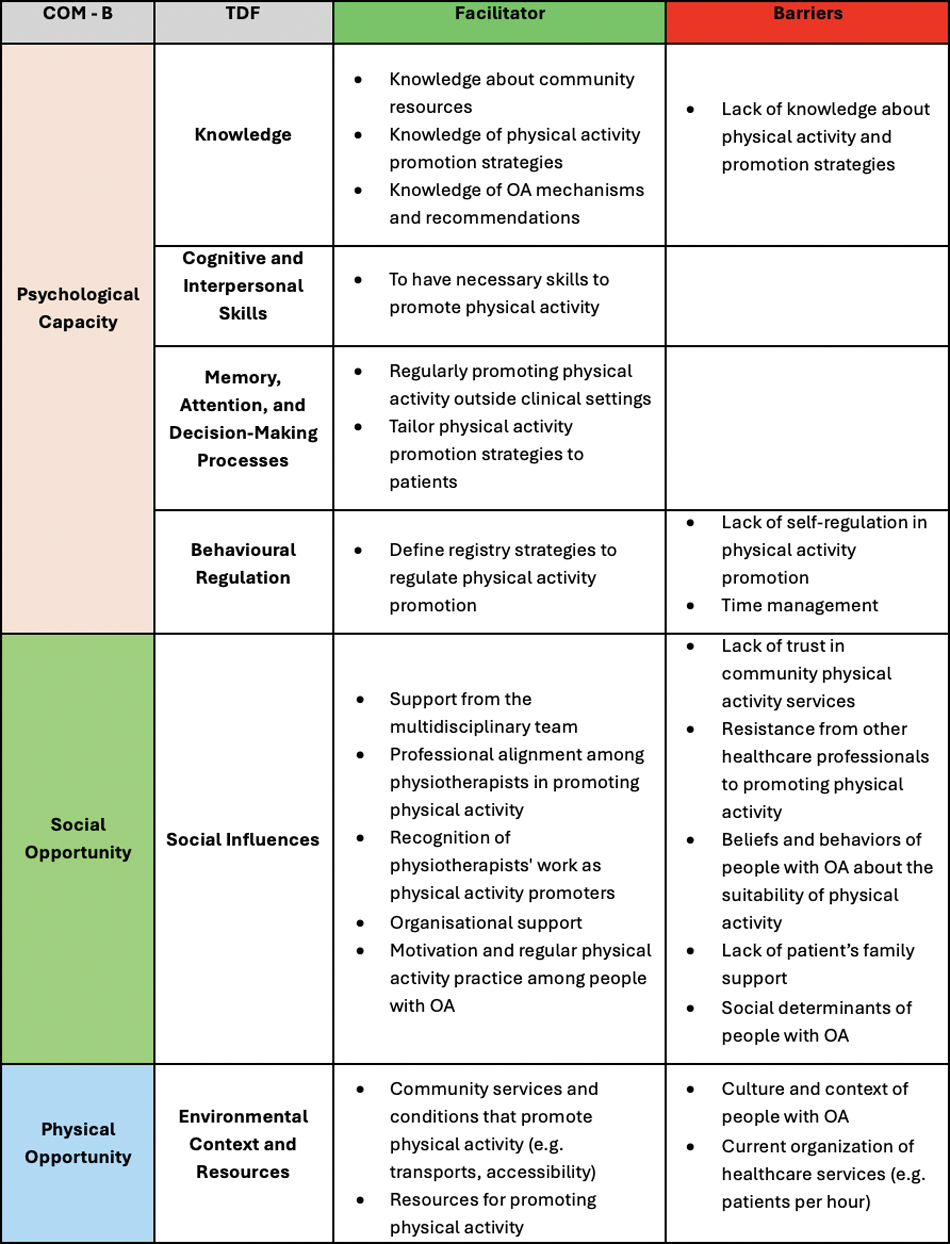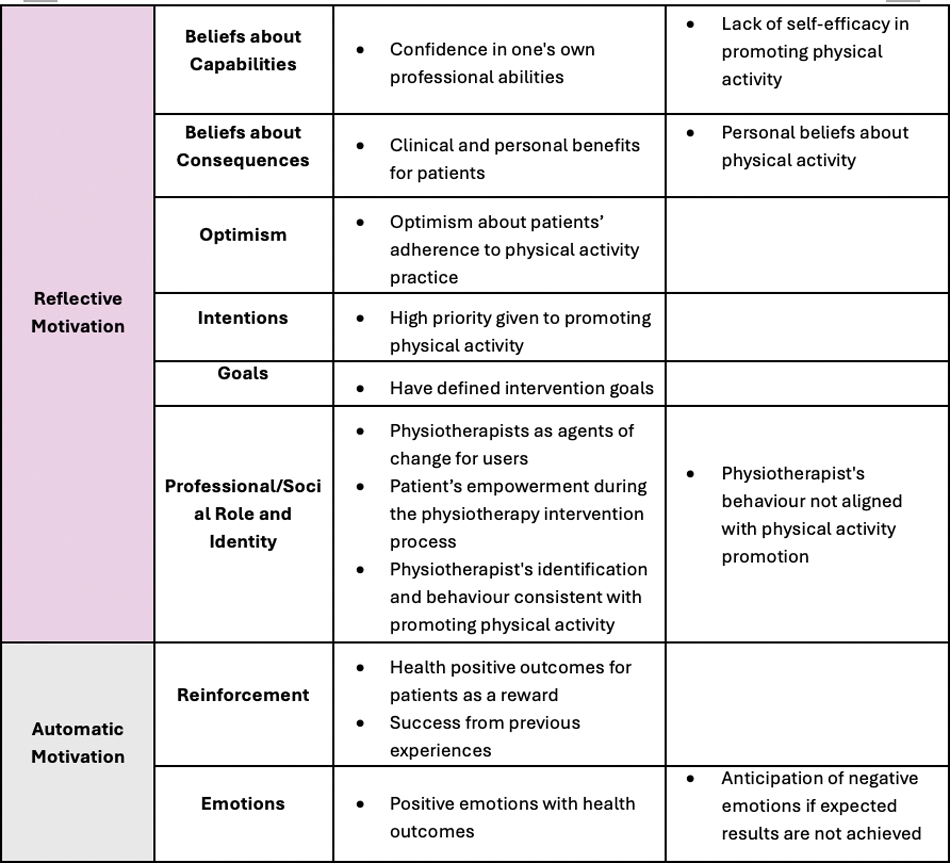

Background: Osteoarthritis (OA) is the most prevalent form of arthritis, affecting approximately 600 million people around the globe, being the fastest-growing condition in terms of years lived with disability. Exercise programs, recommended as core interventions for OA, have demonstrated effectiveness in reducing pain, improving physical function, and enhancing quality of life, if sustained through the course of the disease. However, people with OA often fail to maintain recommended Physical Activity (PA) levels outside clinical settings, highlighting low adherence to PA post-physiotherapy discharge. The evidence also underscores gaps between evidence-based OA guidelines and physiotherapists’ interventions, and insufficient or ineffective PA promotion in people with OA in several countries, including Portugal. Therefore, it is crucial to explore the behaviours of key stakeholders, such as physiotherapists, in promoting PA.
Objectives: This study aims to explore barriers and facilitators perceived by physiotherapists in promoting PA in people with OA, outside of clinical settings. The promotion of PA is defined as the intentional efforts and strategies to encourage regular physical activity, enabling people to stay active outside the clinical context, boosting social participation (e.g. education about PA, PA self-monitoring, referral to community services, home-based exercise plan).
Methods: A qualitative descriptive study was conducted with four focus groups, with a total of 20 Portuguese physiotherapists. Participants were purposively sampled and included physiotherapists working in public and private healthcare settings with individuals with OA. There was variability in gender, age, geographic location, and professional experience. The semi-structured interview guide, focus groups, and data analysis were guided by the Capability, Opportunity, Motivation-Behaviour (COM-B) model and the Theoretical Domains Framework (TDF). Focus groups aimed to explore barriers and facilitators related to the target behaviour of physiotherapists: promotion of PA outside the clinical context, as part of the physical activity intervention, on people OA. Focus groups were conducted via videoconference, audio/video recorded, and transcribed verbatim. Data analysis involved deductive content analysis, using a coding matrix for data organisation and analysis. The first author conducted the initial analysis independently, followed by a review and discussion of codes, subthemes, and identified domains by two additional research team members.
Results: The deductive analysis of focus groups identified 25 facilitators (spanning five COM-B components and 14 TDF domains) and 14 barriers (covering five COM-B components and eight TDF domains) to PA promotion in individuals with OA outside clinical contexts – Table 1. Facilitators for promotion of PA included knowledge of PA promotion strategies, regular promotion of PA beyond clinical settings, tailoring strategies to individuals with OA, support from multidisciplinary teams, availability of community services, environment conditions and resources for PA practice, and resources for PA promotion. Barriers highlighted by participants included lack of confidence in community PA services, resistance from other healthcare professionals to PA promotion, beliefs and behaviours of individuals with OA regarding PA suitability, and the current organisation of healthcare services.
Conclusion: This was the first study in Portugal about physiotherapists’ perspectives about the promotion of PA in people with OA. This study identified physiotherapists’ barriers and facilitators at patient, professional and organizational level for the promotion of PA in individuals with OA, beyond clinical settings. These findings may inform the development of future multi-level interventions, guiding the identification of the most effective behavior change techniques to target the identified determinants, optimise PA promotion by physiotherapists, and integrate healthcare within the community. Such interventions could have significant impacts on individuals with OA and also, people with other chronic diseases, leading to improved health outcomes, increased social participation, and reduced healthcare utilization, with potential positive effects on broader socio-economic outcomes.
Table 1. Barriers and facilitators for the promotion of physical activity according to COM-B and TDF domains


REFERENCES: NIL.
Acknowledgements: NIL.
Disclosure of Interests: None declared.
© The Authors 2025. This abstract is an open access article published in Annals of Rheumatic Diseases under the CC BY-NC-ND license (